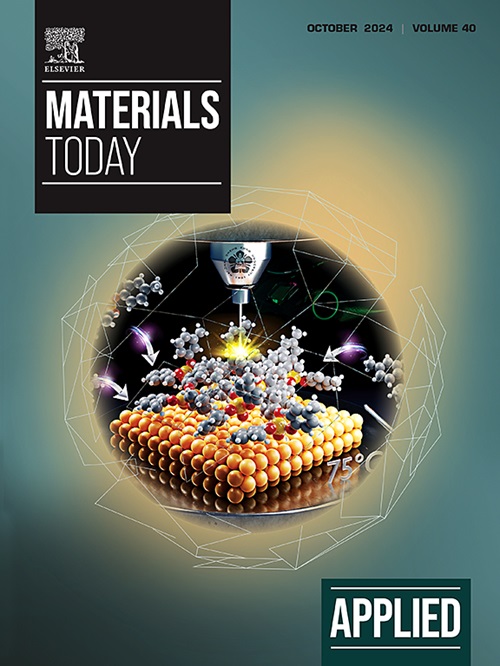针对具有任意形状的 4D 印刷分层结构的机器学习驱动的正向预测和反向设计
IF 6.9
2区 材料科学
Q1 MATERIALS SCIENCE, MULTIDISCIPLINARY
引用次数: 0
摘要
4D 打印的正向预测和反向设计主要集中在二维矩形表面或板材上,对于任意形状的 4D 打印部件的挑战还没有得到充分探索。这一空白源于机器学习范式难以处理不同的输入尺寸。为了解决这个问题,我们提出了一种新颖的机器学习驱动方法,用于为具有任意形状的 4D 打印分层结构定制正向预测和逆向设计。我们的方法用特殊标识符对非矩形形状进行编码,将设计域转换为适合机器学习分析的格式。我们的方法使用残差网络(ResNet)进行正向预测,使用进化算法(EA)进行逆向设计,从而实现了准确高效的预测和设计。结果验证了我们提出的方法的有效性,正向预测模型的损耗低于 ,而反向优化模型的误差保持在 1 毫米附近,相对于优化模型的整个形状而言,误差较小。这些结果证明了我们的方法在 4D 打印应用中准确预测和设计复杂层次结构的能力。本文章由计算机程序翻译,如有差异,请以英文原文为准。
Machine learning driven forward prediction and inverse design for 4D printed hierarchical architecture with arbitrary shapes
The forward prediction and inverse design of 4D printing have primarily focused on 2D rectangular surfaces or plates, leaving the challenge of 4D printing parts with arbitrary shapes underexplored. This gap arises from the difficulty of handling varying input sizes in machine learning paradigms. To address this, we propose a novel machine learning-driven approach for forward prediction and inverse design tailored to 4D printed hierarchical architectures with arbitrary shapes. Our method encodes non-rectangular shapes with special identifiers, transforming the design domain into a format suitable for machine learning analysis. Using Residual Networks (ResNet) for forward prediction and evolutionary algorithms (EA) for inverse design, our approach achieves accurate and efficient predictions and designs. The results validate the effectiveness of our proposed method, with the forward prediction model achieving a loss below , and the inverse optimization model maintaining an error near 1 mm, which is low relative to the entire shape of the optimized model. These outcomes demonstrate the capability of our approach to accurately predict and design complex hierarchical structures in 4D printing applications.
求助全文
通过发布文献求助,成功后即可免费获取论文全文。
去求助
来源期刊

Applied Materials Today
Materials Science-General Materials Science
CiteScore
14.90
自引率
3.60%
发文量
393
审稿时长
26 days
期刊介绍:
Journal Name: Applied Materials Today
Focus:
Multi-disciplinary, rapid-publication journal
Focused on cutting-edge applications of novel materials
Overview:
New materials discoveries have led to exciting fundamental breakthroughs.
Materials research is now moving towards the translation of these scientific properties and principles.
 求助内容:
求助内容: 应助结果提醒方式:
应助结果提醒方式:


